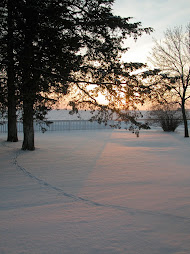The farm didn’t yet have a name and the buildings and land were still hinting at “potential,” when my sister-in-law, Lynn, came to call. What do you think I should do there, I asked her with an arm extended toward the two-and-a-half acre horse pasture. We had no interest in horses.
Lynn regarded the long narrow stretch of unkempt field for just a few seconds. You should plant a vineyard, she said.
I looked at her quizzically then sent a gaze down the length of a pasture peppered with horse poo. I tried to envision tidy rows of vinifera growing in place of lamb’s quarters and pig weed. But I couldn’t. After all, I’d toured the vineyards of California’s Mendocino County and Russian River Valley. I’d studied meteorology in college. I knew the difference between winter spent in a Mediterranean climate and winter in Minnesota – it was roughly 60 degrees. Grapes didn’t winter here.
I looked back at my petite friend, the woman who’d been my brother’s wife for a quarter century. She had just recovered from a series of radiation treatments to her brain, a follow-up to two rounds of chemotherapy. She was smiling.
Yep. Definitely grapevines, she added.
Within a month, I’d learned that Vitis vinifera, the term used to describe Old World European grape varieties such as those grown in France or California, were not suitable for northern vineyards. But a handful of promising varieties recently developed by researchers at the University of Minnesota were; many were disease resistant and tolerant to cold, even Minnesota cold, 30 degrees below zero cold. Brrr. What’s more, the release of new cold-hearty grapes was fueling a local winemaking industry.
The trouble with planting a vineyard is it takes years before you reap what you sow. It takes four years, in fact, from the time you plant root stock to the point where the plant is established enough to support a full crop. In terms of return on investment, that’s a long time to wait. Who’s got that kind of time?
Lynn didn’t. The cancer never stopped spreading and after it bore a hole in one of her lungs, pneumonia set in and she failed quickly. Lynn passed away a week before Christmas in 2006.
We’ve spent a lot of time this summer alternating between various rounds of tillage and applications of Glyphosate in order to eradicate the grass and weed pasture that used to keep five horses content. The ground is now smooth, flat, and a rich shade of brown. Next March, we’ll begin erecting the first of three, 225-foot by 150-foot sections of vineyard trellis, fourteen rows per section. The first 650 vines are due to arrive in May. There’ll be more after that.
When I look at the clear stretch of land, where once all I could see was ugly grass and manure, I can envision purple and green clusters clinging to quivering leaves. I can imagine how the sun will turn my grapes from green to gold to crimson as harvest approaches. I can picture myself walking between rows of Marquette and Edelweiss, a pruner in hand. And I can see Lynn. She’s smiling.
17 August 2007
Subscribe to:
Post Comments (Atom)






No comments:
Post a Comment